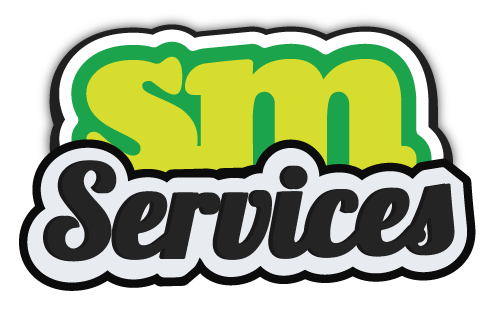In the ever-evolving landscape of digital marketing, automation has become a cornerstone for businesses seeking efficiency and scalability. For cannabis businesses, marketing automation is not just a luxury—it’s a necessity. It allows for streamlined operations, personalized customer interactions, and data-driven decision-making. But what exactly is marketing automation, and how can it benefit your cannabis business? Let’s dive in.
Understanding Marketing Automation
Marketing automation refers to the use of software platforms and technologies designed to automate repetitive marketing tasks. These tasks can range from email marketing and social media posting to customer relationship management (CRM) and analytics. The primary goal is to enhance efficiency, personalize customer experiences, and drive higher ROI.
Importance of Marketing Automation for Cannabis Businesses
The cannabis industry faces unique challenges, including stringent advertising regulations and a rapidly changing market. Marketing automation provides cannabis businesses with the tools to navigate these challenges effectively. It allows for more targeted marketing efforts, ensures compliance, and frees up time for creative and strategic initiatives.
Key Components of Marketing Automation
Email Marketing Automation: Automate your email campaigns to nurture leads, welcome new subscribers, and follow up on purchases. Personalized emails can significantly boost engagement and conversions.
Social Media Automation: Schedule and manage your social media posts across multiple platforms. Automation tools help maintain a consistent online presence and engage with your audience more effectively.
CRM Integration: Integrate your CRM with your marketing automation platform to streamline customer data management, track interactions, and personalize communication.
Analytics and Reporting: Gain insights into your marketing performance with advanced analytics and reporting features. Track key metrics, analyze campaign effectiveness, and make data-driven decisions.
Benefits of Marketing Automation
Improved Efficiency and Productivity: Automation reduces the need for manual tasks, allowing your team to focus on strategy and creativity. It streamlines workflows and ensures tasks are completed on time.
Enhanced Personalization: Use customer data to create personalized marketing messages. Automated segmentation and dynamic content ensure that each customer receives relevant and timely information.
Better Customer Segmentation: Segment your audience based on behavior, demographics, and preferences. Automation tools make it easy to create detailed customer profiles and target them with precision.
Increased ROI: By optimizing marketing efforts and reducing costs, automation helps achieve higher ROI. Targeted campaigns lead to better conversion rates and customer retention.
Setting Up Marketing Automation
Choosing the Right Tools: Select a marketing automation platform that suits your business needs. Look for features like email marketing, CRM integration, social media scheduling, and analytics.
Integrating with Existing Systems: Ensure that your marketing automation tools integrate seamlessly with your existing systems. This integration is crucial for data synchronization and streamlined operations.
Defining Goals and KPIs: Set clear goals and key performance indicators (KPIs) for your marketing campaigns. Automation tools can help you track and measure these metrics accurately.
Creating Automated Workflows
Welcome Series: Set up automated welcome emails for new subscribers to introduce your brand and offerings.
Abandoned Cart Recovery: Send automated reminders to customers who have left items in their shopping carts, encouraging them to complete their purchases.
Post-Purchase Follow-Up: Engage customers after a purchase with thank-you emails, product recommendations, and requests for reviews.
Lead Nurturing Campaigns: Develop automated sequences to nurture leads through the sales funnel with relevant content and offers.
Personalization and Segmentation
Dynamic Content Creation: Use dynamic content to personalize emails and landing pages based on customer data and behavior.
Behavioral Triggers: Set up triggers to send automated messages based on specific customer actions, such as website visits or product views.
Advanced Segmentation Techniques: Segment your audience using advanced criteria to deliver highly targeted marketing messages.
Analyzing and Optimizing Campaigns
Tracking Key Metrics: Monitor metrics such as open rates, click-through rates, conversion rates, and ROI to gauge campaign performance.
A/B Testing: Conduct A/B tests to determine the most effective email designs, subject lines, and calls to action.
Continuous Improvement Strategies: Use analytics insights to continuously refine and improve your marketing campaigns for better results.
Challenges and Solutions in Marketing Automation
Common Pitfalls: Avoid common pitfalls such as over-automation, which can make your communications feel impersonal, and failing to regularly update your content and strategies.
Overcoming Implementation Hurdles: Invest in training and support to ensure your team can effectively use automation tools. Start small and scale up as you gain confidence and expertise.
Maintaining Data Quality: Regularly clean and update your customer data to ensure accuracy and relevance. Use automation tools to manage data hygiene and avoid duplicates.
Case Studies and Success Stories
Highlighting successful marketing automation implementations can provide inspiration and insights. Case studies from similar businesses can illustrate best practices and innovative strategies.
Future Trends in Marketing Automation
Stay ahead of the curve by keeping an eye on emerging trends in marketing automation. Advances in AI, machine learning, and predictive analytics are set to revolutionize the field.
Conclusion
Marketing automation is a game-changer for cannabis businesses, offering a path to greater efficiency, personalization, and ROI. By implementing the right tools and strategies, you can streamline your marketing efforts and achieve significant growth.
At Seedless Media, we specialize in helping cannabis and CBD businesses thrive organically. No matter the size, we offer practical solutions for navigating the dynamic cannabis market. Our team is dedicated to increasing online sales for dispensaries through advertising, search engine marketing, and personalized services. With a focus on data-driven strategies, we aim to solve problems and boost revenue from digital ads. Our goal is to significantly enhance our clients’ sales, brand visibility, and online presence. We excel in PPC Google Ads, display advertising, SEO, email marketing, SMS marketing, website development, and cannabis social media marketing. In short, we’re committed to providing our clients with indispensable solutions to achieve their goals. Contact us today at (480) 626-2608.






